

Home
About Us
Allotments
Garden Equipment
Seed Suppliers
Manure Problems
Children's Pages
GLA Blog
Weather Blog
School Veg Patch
Useful Links
Aphids
Aphids are a major problem in our gardens. There see,ms to be a species of them for every type of plant so it is hardly surprising that there are over 4,000 known species about 500 of which are found in Britain. No wonder that our plants are often plagued by them.
Aphids are very small, soft bodied, sap sucking insects, some of which may go unnoticed as they live underground feeding on plant roots. We often refer to aphids as greenfly or blackfly but they come in a variety of colours.
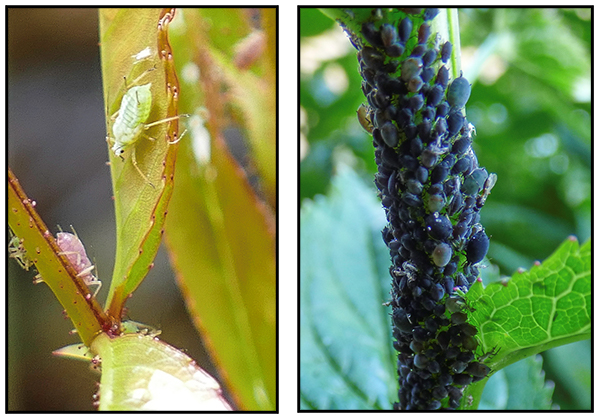
An infestation of aphids can cause the leaves and buds of affected plants to become deformed. They also transmit viruses and disease from one plant to another. Infestations of aphids build up quickly mainly due to the prolific way they reproduce.
In early spring, overwintered aphid eggs hatch to coincide with new leaves and shoots emerging on trees and shrubs. Unfortunately for them, but conveniently for the birds, the hatching also matches the time when parent birds are foraging for insects with which to feed their nestlings.
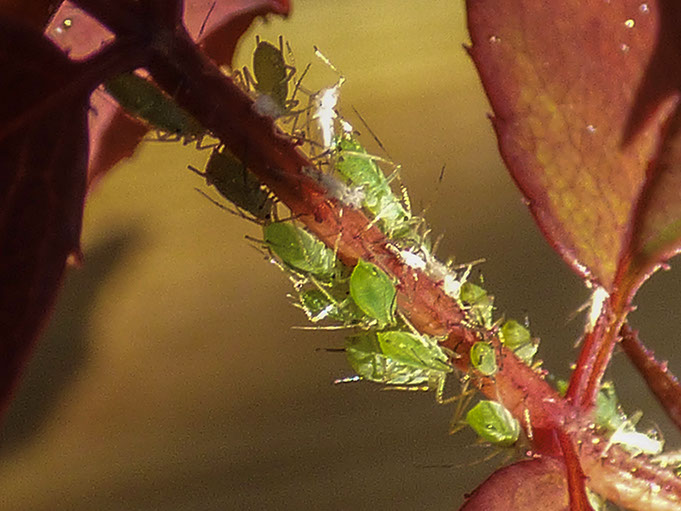
Aphid hatchlings are called nymphs and look just like smaller versions of adult aphids. None of them are male. As is the case for other invertebrates they grow the nymphs shed their skins. These are often seen on plants as a tiny, white, shrivelled bundles.
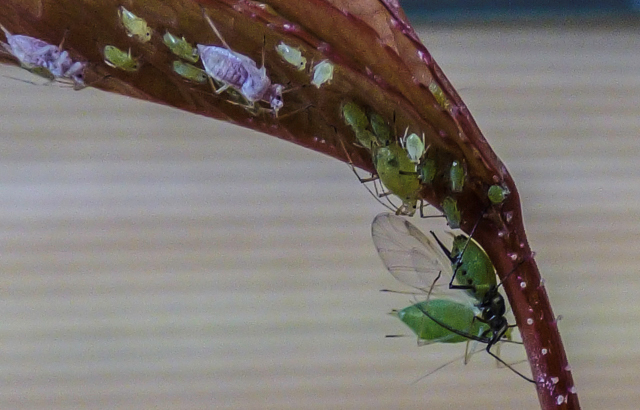
By about a week the nymphs become adult and, without ever having mated, give birth to more female aphids. They miss out the egg stage and give birth to live young. In some species the nymphs even have young inside of them when they are born so in effect the mother aphid gives birth to both daughters and granddaughters.
Females can give birth to 5 young each day and if they survive are reproductive for about 30 days. A naturalist once worked out that if all descendants survived, a single female would be responsible for a line of aphids 27,950 miles long! It is easy to understand why infestations build up so quickly.
Each time the food plant dies or the colony outgrows its food source winged females are produced. They fly off to find another food source which is often a completely different type of plant. The ability to switch food plants os another weapind in its arsenal of garden dominance. The winged females are not strong flyers and so tend to rely on the wind to carry them. This way they can travel some incredible distances. When they land on a suitable plant they give birth to more females and form a new colony. Sometimes we inadvertently help them by introducing plants already harbouring aphids into our homes or gardens.
The cycle of producing wingless and winged females continues throughout the summer until the temperatures cool. In October, for one time only, winged males are produced. Their role is to mate with winged females. The mated females then lay the eggs in cracks and crevices in the bark of woody plants. The eggs are black with a hard coating to protect them if the weather becomes very cold. Here they remain well protected until the weather warms in spring and the eggs hatch to kickstart the whole process into action again.
Aphids, like other members of the big family, feed by piercing the plant with their tube-like mouthparts. They inject saliva into the plant to start digesting the sap and other plant substances. The resulting semi digested food is then pumped back up their feeding tube. The aphid ingests more sugars from the plant than it can use and so it excretes a sticky sugary substance called honeydew, from two tubes on its rear end. Ants love this and will protect colonies of aphids from predators to ensure that the supply of honeydew is maintained.
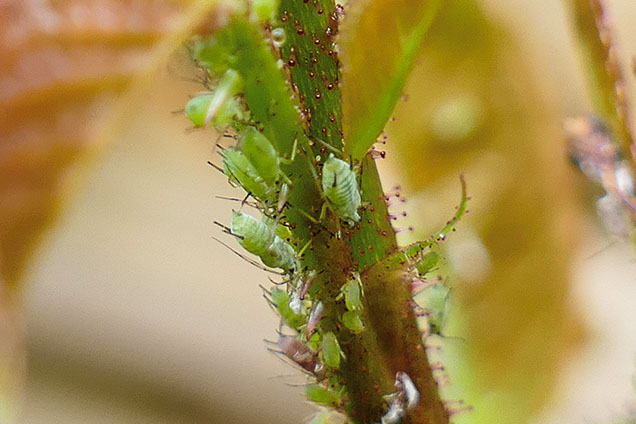
Plants infested by aphids often develop sooty mould. The black fungi also feed on the honeydew. Although it doesn’t directly harm the plant, it prevents the leaves absorbing sunlight and so reduces the plant's ability to feed itself. This compounds the problem caused by aphids sucking nourishment from the plant.
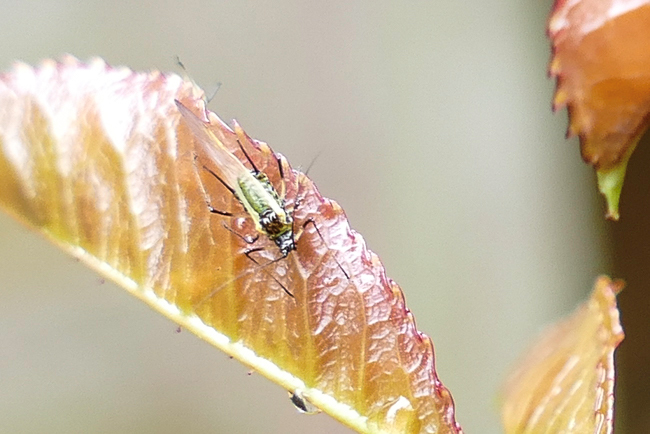
Fortunately, we gardeners have some allies in the war to control aphid numbers. There are parasites, both insect and fungal types which will eventually kill aphids. They also have numerous predators including adults and larvae of lacewings, hoverflies and ladybirds. Many birds will feast on them and during the breeding season when even seed eating birds will feed them to their young.
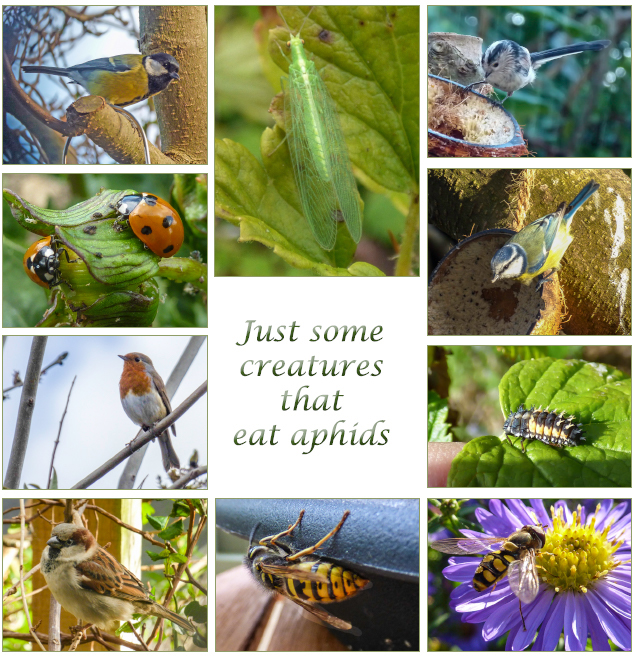
Our Plot at Green Lane Allotments Blog | A Gardener's Weather Diary | School Vegetable Patch Website
© Our Plot on Green Lane Allotments - Please email me if you wish to use any of this site's content